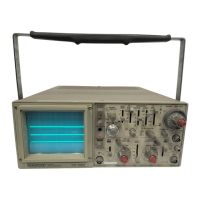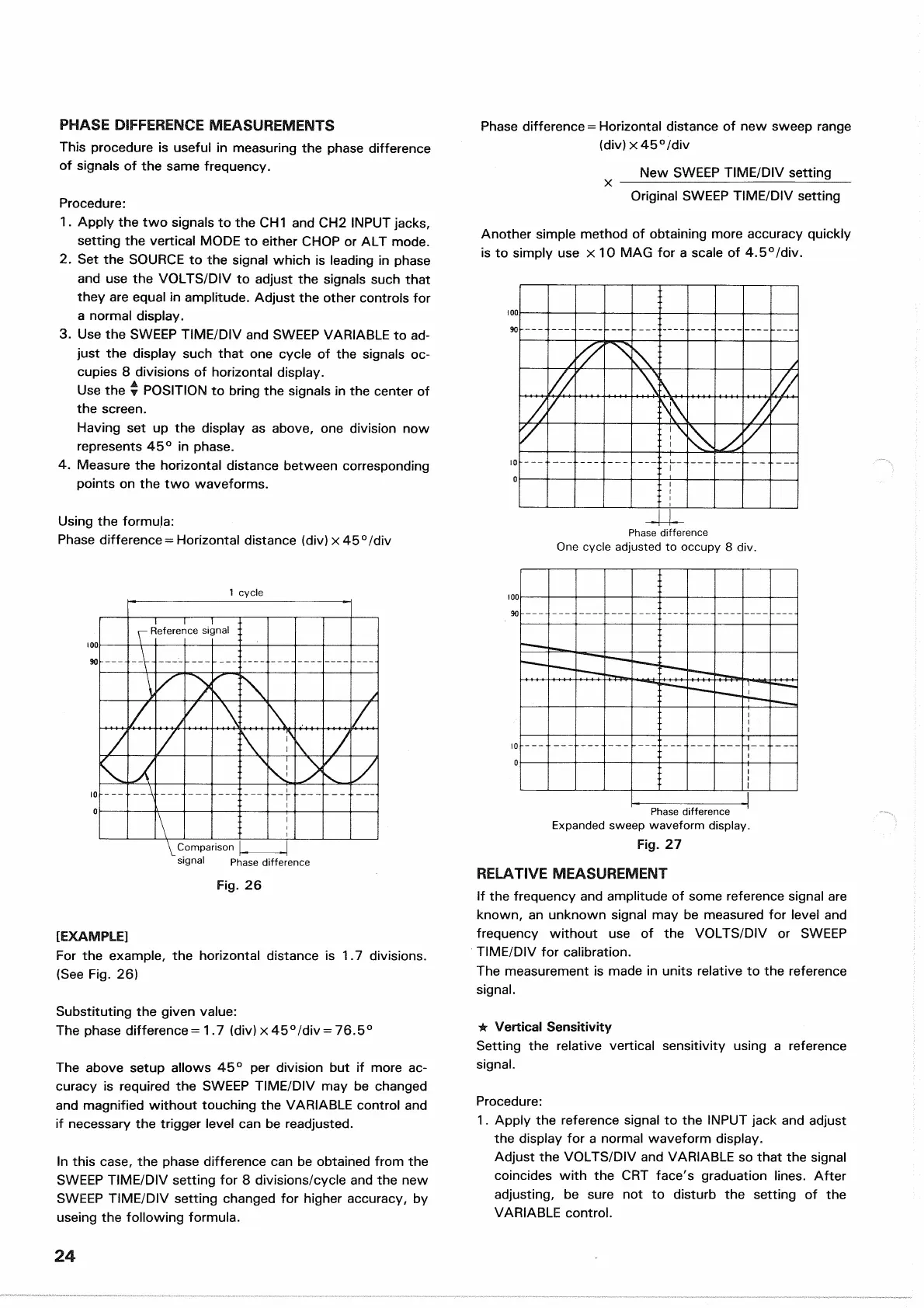PHASE
DIFFERENCE
MEASUREMENTS
This
procedure is useful in measuring the phase difference
of signals of the same frequency.
Procedure:
1.
Apply the two signals to the CH1 and CH2 INPUT
jacks,
setting the vertical MODE to either CHOP or ALT mode.
2.
Set the
SOURCE
to the signal which is leading in phase
and use the VOLTS/DIV to adjust the signals
such
that
they are equal in amplitude. Adjust the other controls for
a
normal display.
3.
Use the
SWEEP
TIME/DIV and
SWEEP
VARIABLE
to ad-
just
the display
such
that
one
cycle
of the signals oc-
cupies
8 divisions of horizontal display.
A
Use
the y POSITION to bring the signals in the center of
the
screen.
Having set up the display as above, one division now
represents
45° in phase.
4. Measure the horizontal distance between corresponding
points on the two waveforms.
Using
the formula:
Phase
difference - Horizontal distance (div) x 45°/div
1
cycle
[EXAMPLE]
For
the example, the horizontal distance is 1.7 divisions.
(See
Fig. 26)
Substituting the given value:
The
phase difference = 1.7 (div) x45°/div = 76.5°
The
above setup allows 45° per division but if more ac-
curacy
is required the
SWEEP
TIME/DIV may be changed
and magnified
without
touching the
VARIABLE
control and
if
necessary
the trigger level can be readjusted.
In this
case,
the phase difference can be obtained
from
the
SWEEP
TIME/DIV setting for 8
divisions/cycle
and the new
SWEEP
TIME/DIV setting changed for higher accuracy, by
useing
the following formula.
Phase
difference = Horizontal distance of new sweep range
(div)x45°/div
New
SWEEP
TIME/DIV setting
x -—
Original
SWEEP
TIME/DIV setting
Another simple method of obtaining more accuracy quickly
is
to simply use x 10 MAG for a
scale
of 4.5°/div.
One
cycle
adjusted
to
occupy
8 div.
24
Phase
difference
Reference
signal
Comparison
signal
Phase
difference
Fig.
26
Phase
difference
Expanded sweep waveform display.
Fig.
27
RELATIVE
MEASUREMENT
If the frequency and amplitude of some reference signal are
known, an unknown signal may be measured for level and
frequency
without
use of the VOLTS/DIV or
SWEEP
TIME/DIV for calibration.
The
measurement is made in units relative to the reference
signal.
* Vertical Sensitivity
Setting the relative vertical sensitivity using a reference
signal.
Procedure:
1.
Apply the reference signal to the INPUT jack and adjust
the display for a normal waveform display.
Adjust
the VOLTS/DIV and
VARIABLE
so
that
the signal
coincides
with
the CRT face's graduation
lines.
After
adjusting,
be sure not to disturb the setting of the
VARIABLE
control.

